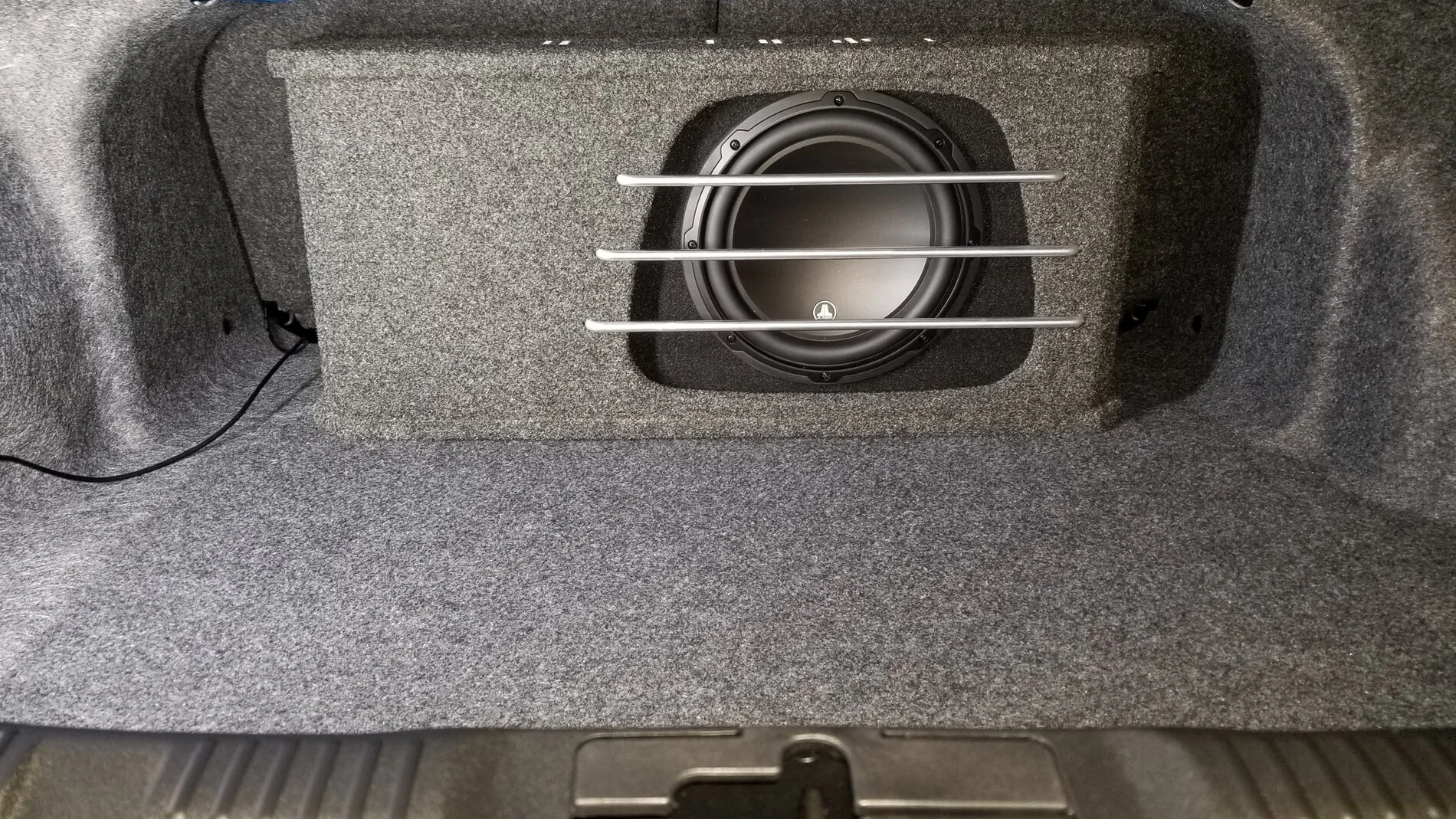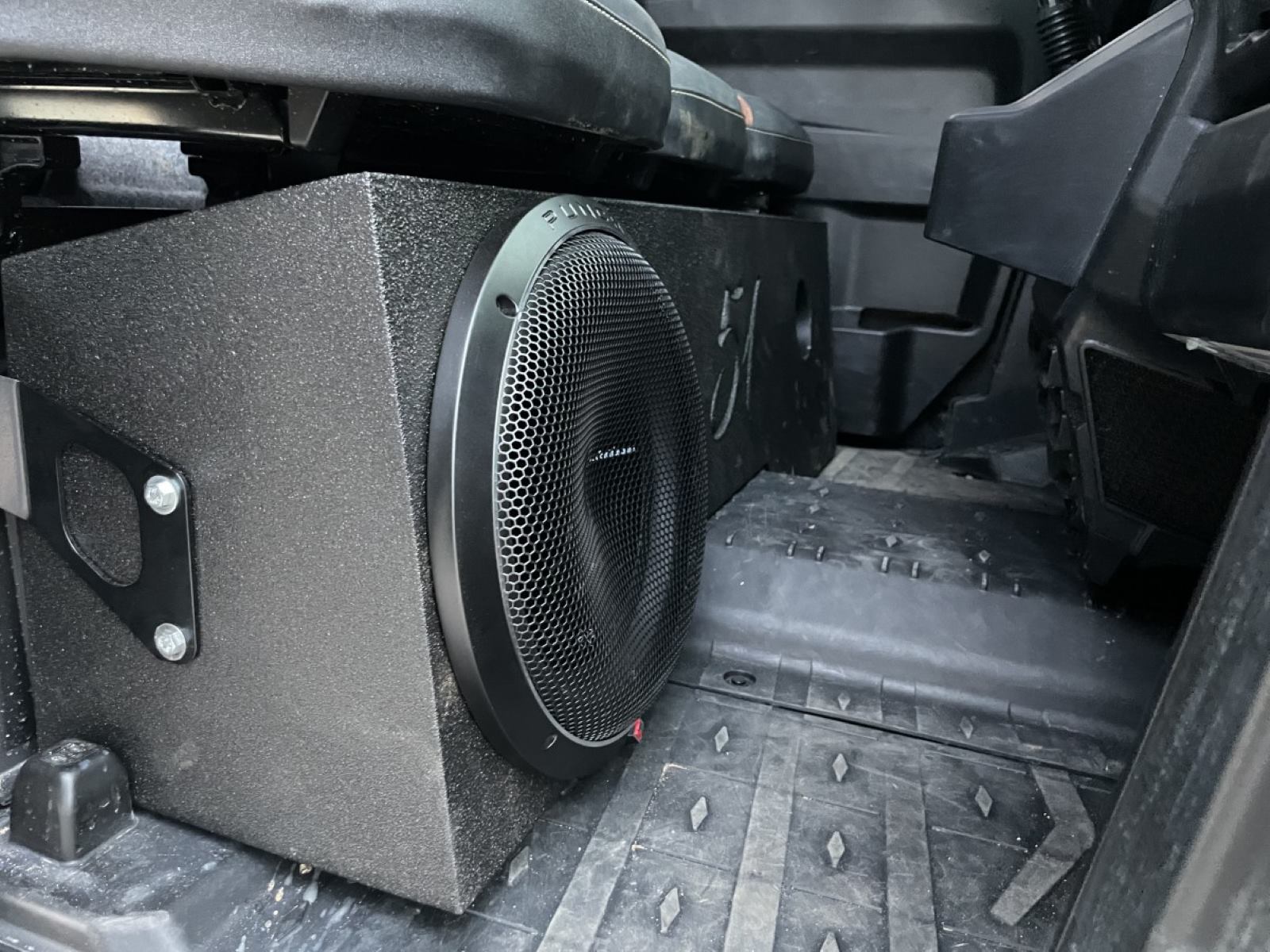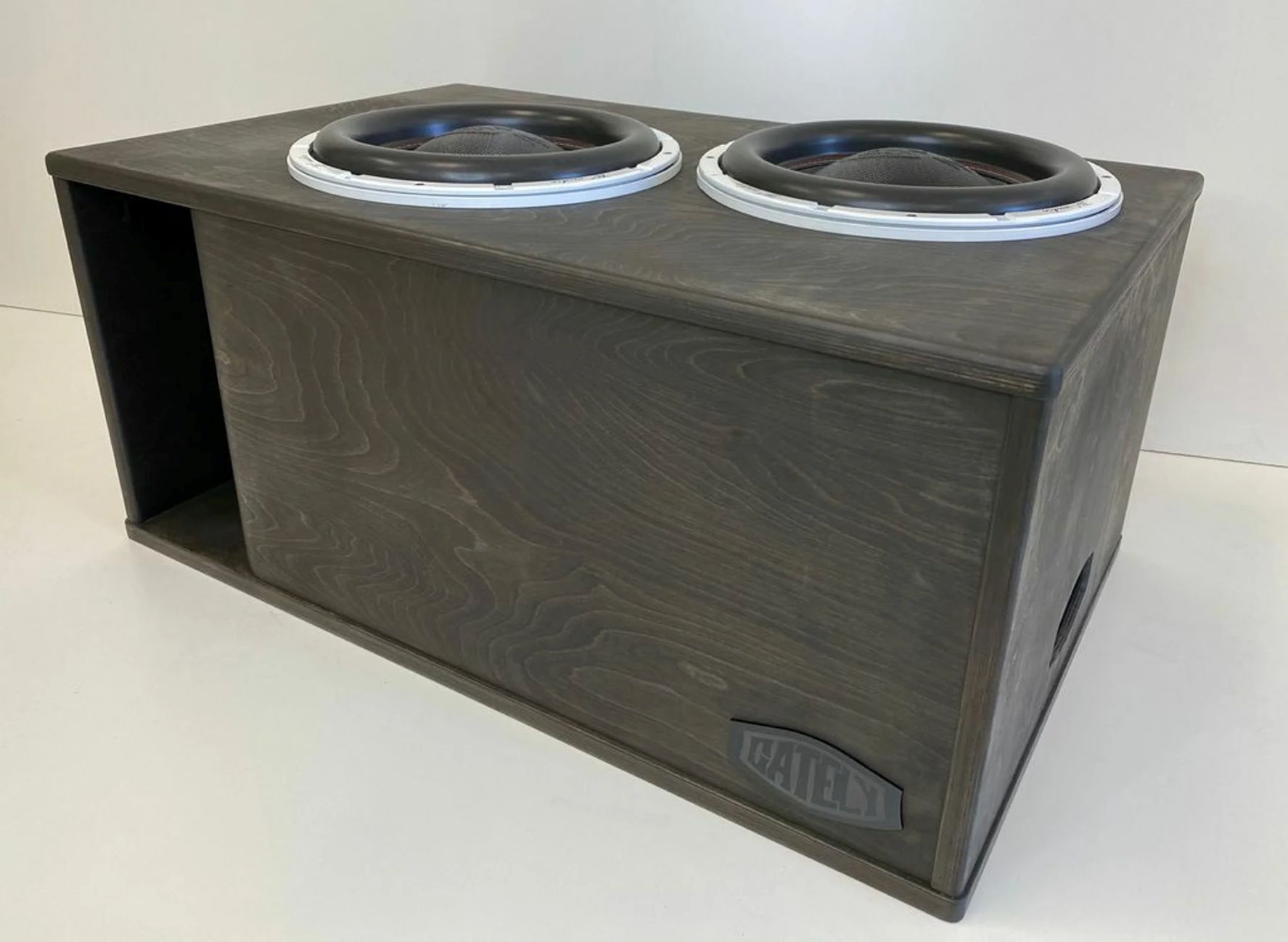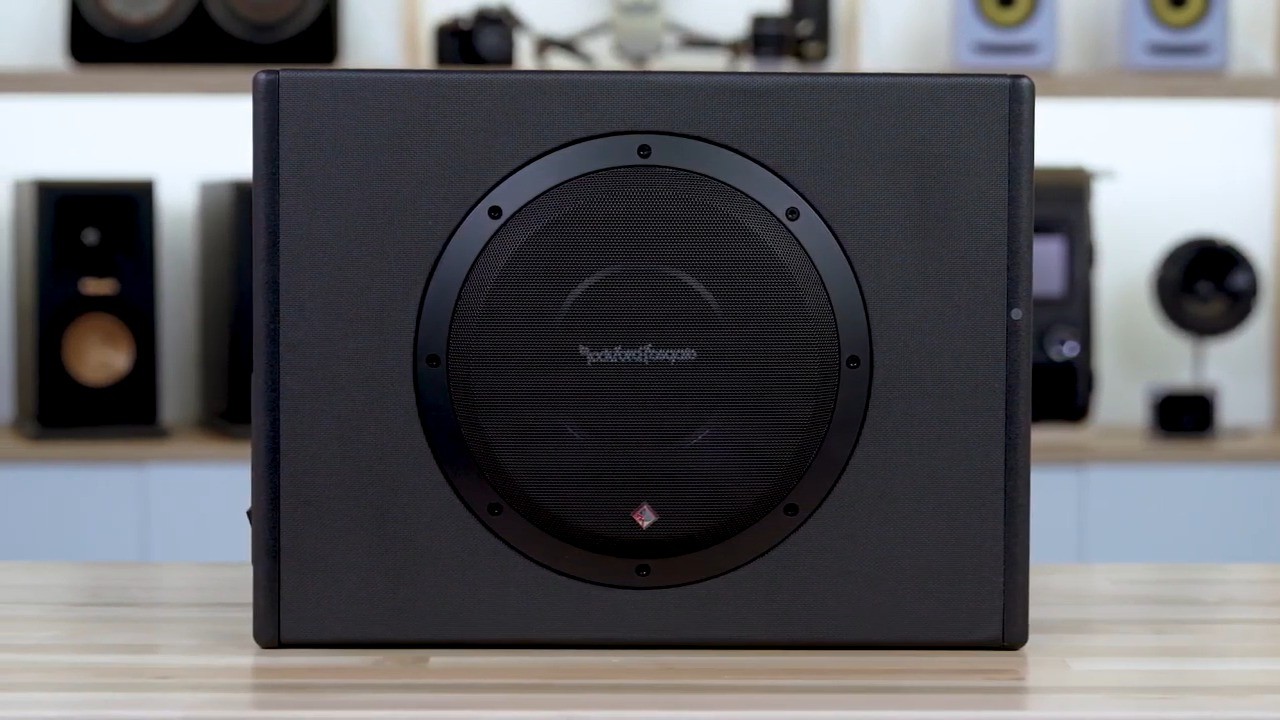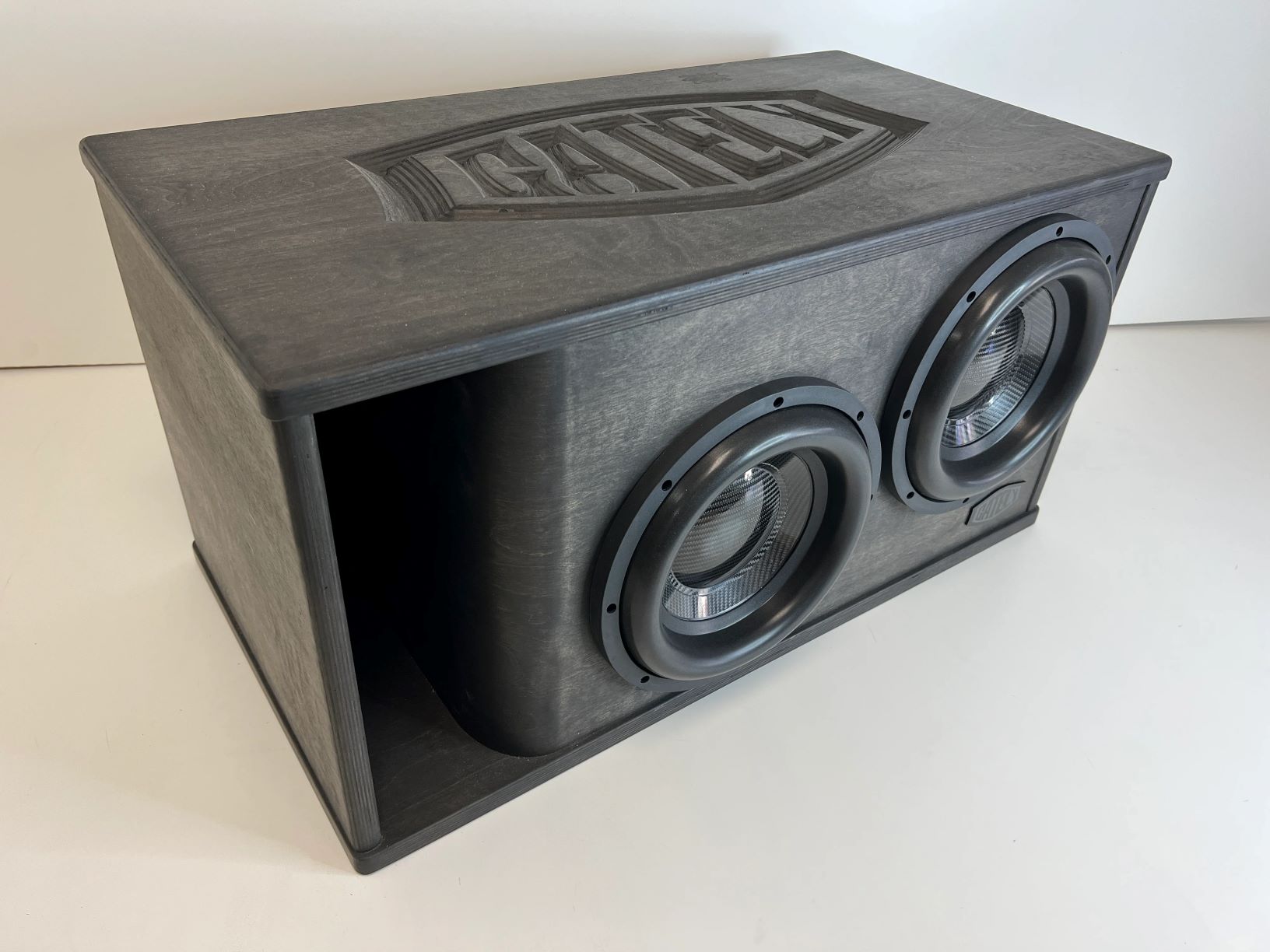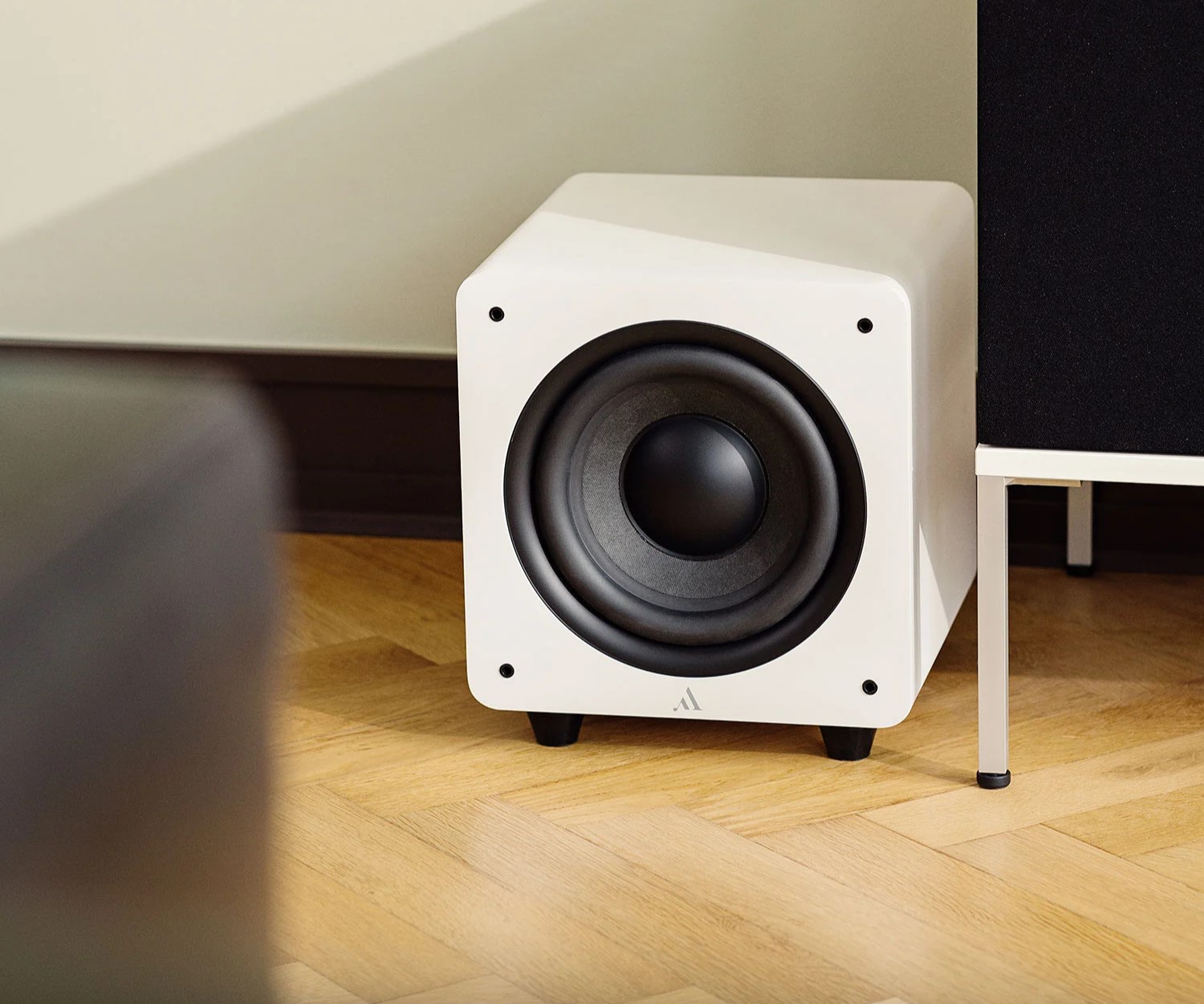Home>Devices & Equipment>Subwoofer>What Is A Subwoofer Box
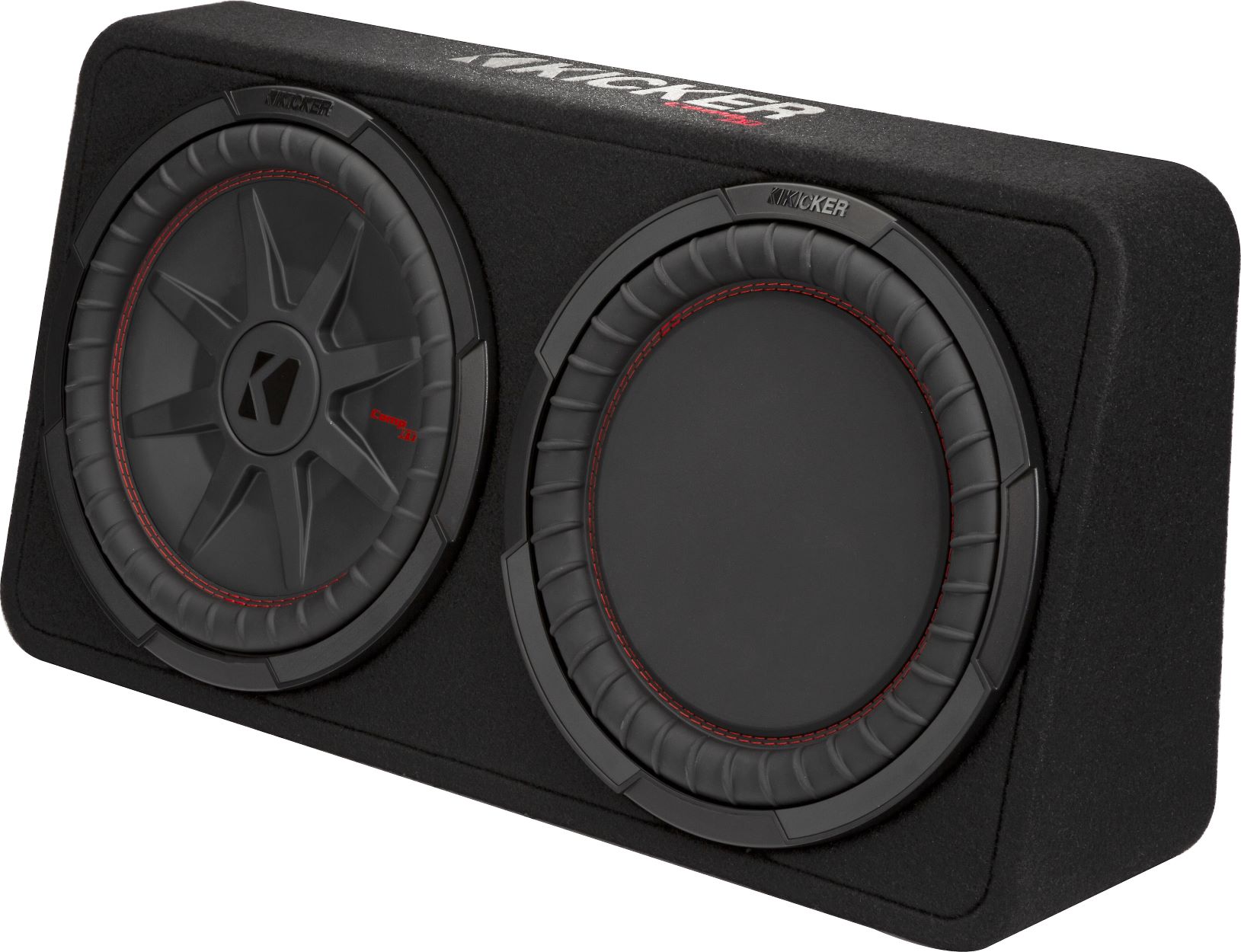

Subwoofer
What Is A Subwoofer Box
Modified: February 18, 2024
Learn about subwoofer boxes and how they enhance your audio experience. Find out the benefits of using a subwoofer and how to choose the right one for your needs.
(Many of the links in this article redirect to a specific reviewed product. Your purchase of these products through affiliate links helps to generate commission for AudioLover.com, at no extra cost. Learn more)
Table of Contents
Introduction
When it comes to achieving that heart-pumping, bone-rattling bass in your car or home audio system, a subwoofer is an absolute essential. But did you know that the type of enclosure you use for your subwoofer plays a crucial role in determining the sound quality, performance, and overall experience? This is where a subwoofer box comes into play.
A subwoofer box, also known as an enclosure or cabinet, is specifically designed to house the subwoofer and optimize its performance. It acts as a sealed chamber, providing the necessary space and control for the subwoofer to produce deep, low-frequency sounds with clarity and precision. While it may seem like a simple component, the subwoofer box has a significant impact on the overall sound output and can make or break your audio experience.
The purpose of this article is to delve deeper into the world of subwoofer boxes, exploring the different types, their designs, and the benefits they offer. Whether you’re a car audio enthusiast looking to upgrade your bass or a home theater aficionado seeking a cinematic experience, understanding subwoofer boxes will enable you to make informed decisions and get the most out of your audio system.
So, if you’re ready to dive into the world of subwoofer boxes and discover the secrets behind achieving that perfect low-frequency punch, let’s get started!
Purpose of a Subwoofer Box
The primary purpose of a subwoofer box is to effectively enclose and support the subwoofer speaker, optimizing its performance and delivering the best possible sound quality. Here are some key reasons why a subwoofer box is crucial for achieving impressive bass reproduction:
- Enhanced Sound Quality: A subwoofer box is designed to eliminate unwanted vibrations and resonance, allowing the subwoofer to operate in a controlled environment. This reduces distortion and produces cleaner, more accurate bass frequencies.
- Increased Efficiency: By providing a sealed or ported enclosure, a subwoofer box helps to maximize the efficiency of the subwoofer speaker. It ensures that the subwoofer operates within its optimal range, resulting in louder and more impactful bass output.
- Improved Power Handling: A properly designed subwoofer box helps to dissipate heat generated by the subwoofer, preventing overheating and increasing its overall power handling capabilities. This allows the subwoofer to handle high power levels without distortion or damage.
- Sound Directionality: A well-designed subwoofer box helps to direct and focus the low-frequency sound waves in a specific direction. This prevents them from interfering with other speakers and ensures that the bass is directed towards the listener, creating a more immersive audio experience.
Overall, the purpose of a subwoofer box is to maximize the potential of the subwoofer speaker and deliver deep, impactful bass that enhances the overall audio performance. It provides a controlled environment for the subwoofer to operate, ensuring optimal sound quality, efficiency, and power handling. Whether you’re looking to add some bass thump to your car audio system or create a cinematic experience in your home theater, a high-quality subwoofer box is a vital component that shouldn’t be overlooked.
Types of Subwoofer Boxes
When it comes to subwoofer boxes, there are several different types available, each with its own unique design and characteristics. Understanding the different types will help you make an informed decision about which one is best suited for your specific audio needs. Here are the most common types of subwoofer boxes:
- Sealed Subwoofer Boxes: Also known as acoustic suspension enclosures, sealed subwoofer boxes are designed to be airtight and provide a tight, accurate bass response. They offer excellent transient response and work well for music genres that require precise and controlled bass reproduction. Sealed boxes are typically compact and require less power compared to other types.
- Ported Subwoofer Boxes: Ported enclosures, also known as bass reflex enclosures, feature a tuned port or vent that allows air to flow in and out of the box. This additional airflow helps to enhance the efficiency and extend the low-frequency response of the subwoofer. Ported boxes are known for producing louder and deeper bass compared to sealed enclosures, making them ideal for applications that require more impactful bass, such as car audio systems.
- Bandpass Subwoofer Boxes: Bandpass enclosures are a combination of sealed and ported boxes, providing the best of both worlds. They feature two chambers – a sealed compartment and a ported compartment – with the subwoofer mounted between them. Bandpass boxes are designed to emphasize a specific range of frequencies, resulting in a loud and boomier bass output. However, they can be more complex to design and require careful tuning for optimum performance.
- Custom Subwoofer Boxes: Custom subwoofer boxes are tailored to specific subwoofer models or vehicle setups. They are designed to maximize space utilization and enhance the overall sound quality by precisely matching the subwoofer’s specifications. Custom enclosures can be built using different techniques and materials, such as fiberglass or MDF (Medium-Density Fiberboard), allowing for greater flexibility in design and performance.
Each type of subwoofer box has its own advantages and is suitable for different applications and preferences. Consider factors such as available space, desired sound characteristics, and power handling capabilities when choosing the right type of box for your subwoofer. By selecting the appropriate box, you can ensure optimal bass reproduction and achieve the desired impact and clarity in your audio system.
Sealed Subwoofer Boxes
Sealed subwoofer boxes, also known as acoustic suspension enclosures, are a popular choice among audio enthusiasts looking for precise and controlled bass reproduction. These boxes are designed to be airtight, providing a sealed environment for the subwoofer to operate.
One of the key benefits of sealed subwoofer boxes is their ability to deliver accurate and tight bass response. By trapping the air inside the enclosure, the box creates a spring-like effect, which helps to control the movement of the subwoofer’s cone. This results in less distortion and a more accurate representation of low-frequency sounds.
Due to their sealed design, these enclosures are also known for their excellent transient response. They can stop and start rapidly, allowing for quick and precise bass notes. This makes sealed subwoofer boxes suitable for music genres that require tight and punchy bass, such as rock or jazz.
Sealed subwoofer boxes are also typically more compact in size compared to other types of enclosures. This can be advantageous for those with limited space in their car or home audio setup. Additionally, due to their sealed nature, these boxes are more forgiving when it comes to the power handling capabilities of the subwoofer. They generally require less power to produce quality bass, making them an efficient choice for those with lower-powered amplifiers.
However, it is important to note that sealed subwoofer boxes may not produce the same level of bass output as other types of enclosures, such as ported or bandpass. They provide a more controlled and accurate bass response rather than excessive boom and loudness. Therefore, if you’re looking for an earth-shaking, chest-thumping bass experience, sealed subwoofer boxes may not be the ideal choice for you.
In summary, sealed subwoofer boxes offer precise and controlled bass reproduction with excellent transient response. They are compact, efficient, and well-suited for music genres that require tight and accurate bass notes. Consider these factors when selecting an enclosure for your subwoofer, depending on your audio preferences and available space.
Ported Subwoofer Boxes
Ported subwoofer boxes, also known as bass reflex enclosures, are a popular choice for those seeking deep, powerful bass reproduction. These enclosures feature a specially designed port or vent that allows air to flow in and out of the box, enhancing the efficiency and performance of the subwoofer.
One of the key advantages of ported subwoofer boxes is their ability to produce louder and deeper bass compared to sealed enclosures. The ported design allows for additional airflow, which helps to enhance the low-frequency response of the subwoofer. This results in a more impactful and immersive bass experience, making ported enclosures ideal for applications where a “boomy” bass is desired, such as car audio systems or home theaters.
In addition to enhanced bass output, ported subwoofer boxes also offer improved efficiency. The port assists in the movement of air, making it easier for the subwoofer to generate sound. This means that ported enclosures can achieve higher sound levels with less power compared to sealed enclosures. They are a great choice for those who want a powerful bass impact without requiring high-powered amplifiers.
It is worth noting that ported subwoofer boxes tend to be larger in size compared to sealed enclosures. The ported design necessarily requires more space to accommodate the vent and the necessary internal volume. As such, these enclosures may not be suitable for applications where space is limited.
Another aspect to consider with ported subwoofer boxes is their tuning. The size and shape of the port, along with the internal volume, dictate the frequency response of the box. The tuning can affect the overall sound character and should be chosen carefully to suit your preferences and the specific subwoofer you are using.
Overall, ported subwoofer boxes offer deep, powerful bass reproduction with improved efficiency. They provide a boomy and impactful bass experience that is well-suited for car audio systems and home theaters. However, be mindful of the larger size requirements and the importance of proper tuning when considering a ported enclosure for your subwoofer.
Bandpass Subwoofer Boxes
Bandpass subwoofer boxes are a unique type of enclosure that combines elements of both sealed and ported designs. They are designed to emphasize a specific range of frequencies and provide a loud, booming bass output. Bandpass enclosures consist of two chambers – a sealed chamber and a ported chamber – with the subwoofer mounted between them.
One of the key benefits of bandpass subwoofer boxes is their ability to produce extremely loud and powerful bass. The design allows for the enclosure to act as a “filter,” emphasizing a narrow range of frequencies and effectively amplifying them. This results in a strong and impactful bass response that can shake the surroundings and create a visceral audio experience.
Bandpass enclosures also offer a unique advantage in terms of efficiency. The combination of the sealed and ported chambers enhances the overall efficiency of the subwoofer system, allowing for greater sound output with less power. This makes bandpass enclosures an attractive choice for those who want to achieve high sound levels without requiring a large amplifier.
It is important to note that bandpass subwoofer boxes can be more complex to design and fine-tune compared to other types of enclosures. The tuning of the enclosure, including the size of the chambers and the port, must be precisely calculated to achieve the desired frequency response. Improper tuning can result in distorted or muddy bass output. Therefore, it is recommended to consult with an expert or refer to the manufacturer’s specifications when selecting or building a bandpass enclosure.
Additionally, bandpass subwoofer boxes may not be suitable for all audio preferences or applications. The emphasis on a specific frequency range means that they may not reproduce all bass frequencies equally. This can result in a potentially uneven bass response, depending on the design and tuning of the enclosure.
In summary, bandpass subwoofer boxes offer a distinct and powerful bass output, emphasizing specific frequencies and providing a loud and impactful audio experience. They are known for their efficiency and ability to produce high sound levels with less power. However, the design and tuning complexities should be considered, and their suitability for different audio preferences may vary.
Custom Subwoofer Boxes
Custom subwoofer boxes are specifically designed enclosures that are tailored to the specific subwoofer model or vehicle setup. These boxes are built to maximize space utilization, enhance the overall sound quality, and ensure a perfect fit for the subwoofer.
One of the key advantages of custom subwoofer boxes is their ability to optimize the performance of the subwoofer. By precisely matching the dimensions and specifications of the subwoofer, these enclosures ensure that the subwoofer operates at its peak capabilities. This results in improved sound quality, increased efficiency, and better overall performance.
Custom subwoofer boxes also allow for flexibility in design and construction. They can be built using various materials, such as fiberglass or MDF (Medium-Density Fiberboard), to achieve specific goals. For example, fiberglass enclosures can be molded to conform to the shape of the vehicle interior, maximizing the use of available space. On the other hand, MDF enclosures offer rigidity and excellent acoustic properties. The choice of material depends on factors such as desired aesthetics, durability, and overall sound characteristics.
Another benefit of custom subwoofer boxes is their ability to integrate with the vehicle’s interior seamlessly. With a custom enclosure, you can ensure that the subwoofer is installed in a manner that does not sacrifice valuable space or hinder accessibility. This is particularly important in car audio installations, where every inch of space is crucial.
However, it is worth noting that custom subwoofer boxes may require advanced knowledge and expertise to design and build. Ensuring proper measurements, construction techniques, and tuning are crucial for achieving optimal results. It is recommended to consult with professionals or refer to trusted sources when considering a custom subwoofer box.
In summary, custom subwoofer boxes offer tailored solutions for maximizing space utilization, optimizing sound quality, and achieving a perfect fit. They allow for flexibility in design and material choice, ensuring that the subwoofer operates at its peak performance. However, the design and construction may require advanced knowledge and expertise, making it important to consult with professionals for best results.
Factors to Consider when Choosing a Subwoofer Box
Choosing the right subwoofer box is crucial for achieving optimal bass performance and ensuring a satisfying audio experience. Here are some key factors to consider when selecting a subwoofer box:
- Subwoofer Specifications: Take into account the specific requirements and recommendations of your subwoofer. The size, power handling capabilities, and recommended enclosure type should guide your choice of box.
- Available Space: Consider the available space in your car or home audio setup. Determine whether you have sufficient space for the recommended box size and whether it fits comfortably within the allotted area.
- Desired Sound Characteristics: Think about the type of bass response you prefer. Do you want tight and precise bass, or do you prefer a boomy and exaggerated low-end? Different enclosure types will produce different bass characteristics.
- Power Handling: Consider the power requirements of your subwoofer and match it with an appropriate box. Some subwoofers may require larger enclosures or have specific recommendations for sealed or ported designs.
- Listening Environment: Assess the environment in which you will be using the subwoofer. Are you primarily using it in a car, a home theater, or a studio? Each environment may have different acoustic properties that can influence the choice of subwoofer box.
- Build Quality: Evaluate the build quality of the subwoofer box. Look for sturdy construction, durable materials, and proper sealing to ensure optimal performance and longevity.
- Budget: Consider your budget and find a subwoofer box that strikes a balance between cost and performance. There are options available at various price points, but it’s essential to invest in a quality enclosure that suits your needs.
By considering these factors, you’ll be able to choose a subwoofer box that is best suited for your specific requirements. A well-matched enclosure will enhance the overall sound quality, maximize the potential of your subwoofer, and provide an enjoyable audio experience.
Importance of Subwoofer Box Design
The design of a subwoofer box plays a critical role in the overall performance and sound quality of the subwoofer. Here are some key reasons why subwoofer box design is important:
- Bass Response: The design of the subwoofer box directly affects the bass response. Whether it’s a sealed, ported, or bandpass enclosure, each design has a different impact on the reproduction of low-frequency sounds. A well-designed box ensures that the subwoofer performs optimally within the desired frequency range.
- Controlled Airflow: The airflow within the subwoofer box is crucial for achieving accurate and controlled bass. The design of the box, including the size and shape of the enclosure and any ports or vents, determines how the air moves in and out. Proper airflow helps to reduce distortion and improve the overall efficiency of the subwoofer.
- Resonance and Vibration Reduction: A well-designed subwoofer box helps to reduce unwanted resonance and vibration that can distort the sound output. By using appropriate materials, bracing techniques, and damping materials, the box can minimize resonance and enhance the overall sound quality.
- Optimized Power Handling: The design of the subwoofer box can impact the power handling capabilities of the subwoofer. The box provides adequate cooling and ventilation for the subwoofer, preventing excessive heat build-up and ensuring the subwoofer can handle high power levels without distortion or damage.
- Compatibility with Subwoofer Specifications: Each subwoofer has specific requirements and recommendations for box size, internal volume, and enclosure type. A well-designed box takes these specifications into account, ensuring that the subwoofer operates optimally and delivers the desired performance.
Overall, the design of the subwoofer box is crucial for achieving optimal performance, sound quality, and durability. It directly impacts the bass response, controls airflow, reduces resonance and vibrations, optimizes power handling, and ensures compatibility with the subwoofer specifications. By investing in a well-designed box, you can maximize the potential of your subwoofer and enjoy a rich and immersive bass experience.
Benefits of Using a Subwoofer Box
Using a subwoofer box in your audio system offers a variety of benefits that greatly enhance the audio experience. Here are some key advantages of using a subwoofer box:
- Improved Bass Performance: A subwoofer box provides the necessary enclosure for the subwoofer, allowing it to generate deep, powerful bass frequencies with greater accuracy and precision. The box helps to control and enhance the low-end response, resulting in a more impactful and immersive bass experience.
- Reduced Distortion: The design of a subwoofer box helps to minimize unwanted distortion by providing a controlled environment for the subwoofer. With reduced distortion, the bass reproduction is cleaner, clearer, and more faithful to the original audio content.
- Enhanced Sound Quality: A subwoofer box helps to optimize the overall sound quality of the audio system. By focusing on the bass frequencies and allowing the subwoofer to perform at its best, the box brings balance and depth to the audio mix, creating a more well-rounded and immersive sound experience.
- Better Power Handling: The enclosure of a subwoofer box helps to dissipate heat and improve the power handling capabilities of the subwoofer. This allows the subwoofer to handle higher power levels without distortion or damage, ensuring longevity and consistent performance.
- Directional Bass Control: A well-designed subwoofer box helps to direct and focus the bass frequencies towards the listeners, preventing excessive bass dispersion and interference with other speakers. This creates a more precise and localized bass response, enhancing the clarity and impact of the audio.
- Protection and Durability: A subwoofer box provides protection for the subwoofer, shielding it from potential damage caused by external elements or accidents. It also adds durability and structural integrity to the subwoofer setup, extending the lifespan of the subwoofer and ensuring consistent performance over time.
In summary, using a subwoofer box offers a range of significant benefits, including improved bass performance, reduced distortion, enhanced sound quality, better power handling, directional bass control, and protection for the subwoofer. By incorporating a subwoofer box into your audio system, you can elevate the low-frequency performance, achieve a more balanced audio mix, and enjoy a more immersive and satisfying listening experience.
Conclusion
In conclusion, a subwoofer box is an essential component for achieving optimal bass performance and enhancing your audio experience. Whether you’re listening to music in your car or creating a cinematic experience in your home theater, choosing the right subwoofer box is crucial for achieving the desired sound quality and impact.
We explored different types of subwoofer boxes, including sealed, ported, bandpass, and custom enclosures. Each type offers unique characteristics and advantages, allowing you to customize your bass response according to your preferences and application. Understanding the different types of boxes and their design principles will help you make an informed decision when selecting the most suitable one for your specific needs.
Additionally, we discussed key factors to consider when choosing a subwoofer box, including subwoofer specifications, available space, desired sound characteristics, power handling, listening environment, build quality, and budget. Taking these factors into account will ensure that you select a box that maximizes the performance of your subwoofer while also fitting within your constraints and preferences.
We also emphasized the importance of subwoofer box design, such as bass response, controlled airflow, resonance reduction, optimized power handling, and compatibility with subwoofer specifications. A well-designed box not only enhances the overall sound quality but also protects the subwoofer and provides the optimal environment for it to operate at its full potential.
Ultimately, using a subwoofer box offers a range of benefits, including improved bass performance, reduced distortion, enhanced sound quality, better power handling, directional bass control, and protection for the subwoofer. By incorporating a subwoofer box into your audio system, you can elevate your listening experience and enjoy deep, powerful bass that resonates with every beat.
So, whether you’re a car audio enthusiast or a dedicated home theater buff, don’t overlook the importance of a well-designed subwoofer box. Invest in a quality enclosure that matches your subwoofer’s capabilities and suits your audio preferences. With the right subwoofer box, you can unleash the full potential of your audio system and immerse yourself in a truly captivating and immersive sonic experience.

